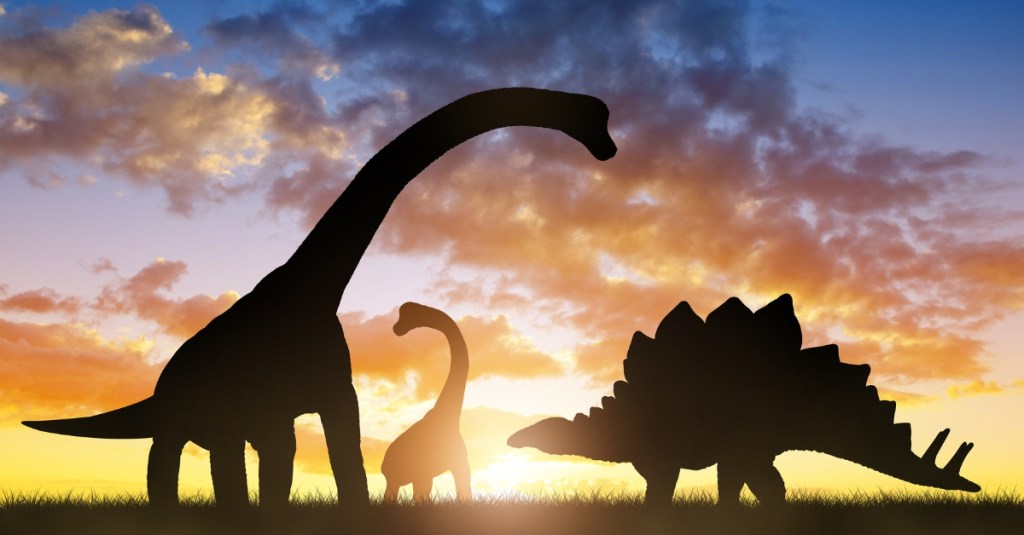Top Stories
Researchers Confirm Dinosaurs Engaged in Violent Mating Rituals

BREAKING: New research reveals that dinosaurs, specifically hadrosaurs, engaged in violent mating behaviors, shedding light on how to distinguish between male and female specimens. This study, led by Professor Eileen Murphy from Queen’s University Belfast, was published in iScience and presents groundbreaking findings that could reshape our understanding of dinosaur biology.
Researchers analyzed the top vertebrae of hadrosaur tails, particularly the area near the cloaca, uncovering a startling pattern: numerous fossils displayed signs of healed fractures. The discovery spans across hundreds of fossils from regions in Eurasia and North America, indicating a common mating behavior rather than mere injuries from predatory attacks or combat.
The data suggests a shocking conclusion: the fractures were likely caused by males crushing females’ tails during mating. Computer models confirmed that the forces needed to inflict these injuries align with the physics of dinosaur copulation, indicating that mating rituals were not only intense but potentially harmful.
Professor Gareth Arnott, an author of the study, noted that this behavior mirrors some modern species, such as sea lions, which also exhibit rough mating tactics. The findings underscore that for these prehistoric creatures, the act of reproduction came with significant risks. The healed fractures indicate that while painful, these injuries did not prevent females from surviving and continuing to reproduce.
As Filippo Bertozzo, the study’s first author, stated, this research opens “the first door on sexual behavior of dinosaurs.” The implications for paleontology are profound, providing a new method to differentiate male from female fossils based on physical evidence of their mating habits.
This urgent update not only enhances our understanding of dinosaur behavior but also highlights the complexities of their reproductive strategies. As researchers continue to delve into these prehistoric practices, the findings promise to change how we view dinosaur biology and gender identification in the fossil record.
Stay tuned for further developments as additional studies may reveal even more about the lives of these ancient creatures. This research is a significant leap forward in paleontology, making the study of dinosaur behavior more relatable and relevant to contemporary biology.
-

 Science3 weeks ago
Science3 weeks agoInterstellar Object 3I/ATLAS Emits Unique Metal Alloy, Says Scientist
-

 Politics3 weeks ago
Politics3 weeks agoAfghan Refugee Detained by ICE After Asylum Hearing in New York
-

 Science3 weeks ago
Science3 weeks agoResearchers Achieve Fastest Genome Sequencing in Under Four Hours
-

 Business3 weeks ago
Business3 weeks agoIconic Sand Dollar Social Club Listed for $3 Million in Folly Beach
-

 Health3 weeks ago
Health3 weeks agoPeptilogics Secures $78 Million to Combat Prosthetic Joint Infections
-

 Lifestyle3 weeks ago
Lifestyle3 weeks agoJump for Good: San Clemente Pier Fundraiser Allows Legal Leaps
-

 Science3 weeks ago
Science3 weeks agoMars Observed: Detailed Imaging Reveals Dust Avalanche Dynamics
-

 Health3 weeks ago
Health3 weeks agoResearcher Uncovers Zika Virus Pathway to Placenta Using Nanotubes
-

 World3 weeks ago
World3 weeks agoUS Passport Ranks Drop Out of Top 10 for First Time Ever
-

 Entertainment3 weeks ago
Entertainment3 weeks agoJennifer Lopez Addresses A-Rod Split in Candid Interview
-

 Business3 weeks ago
Business3 weeks agoSan Jose High-Rise Faces Foreclosure Over $182.5 Million Loan
-

 Top Stories3 weeks ago
Top Stories3 weeks agoChicago Symphony Orchestra Dazzles with Berlioz Under Mäkelä









